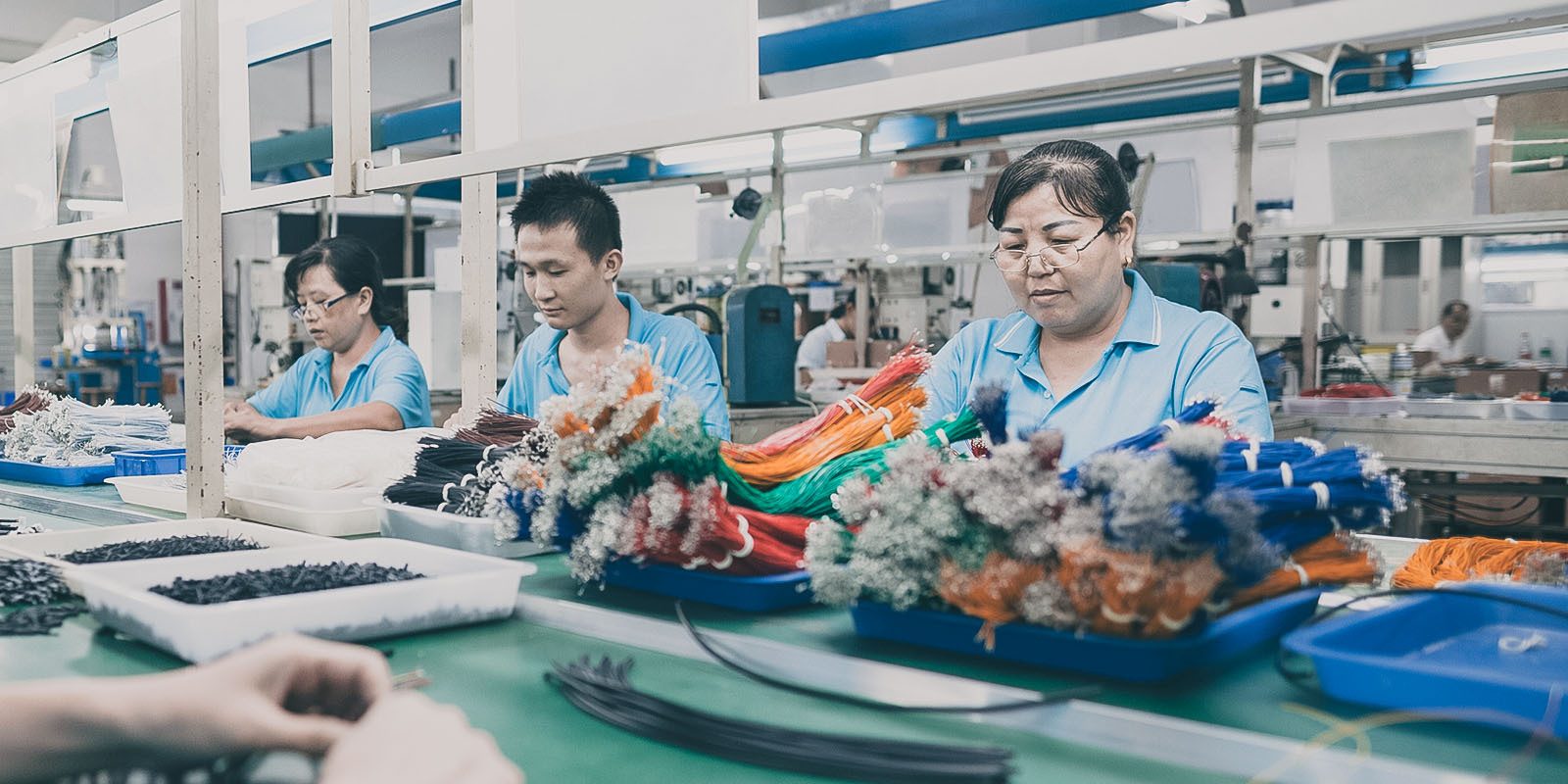Social responsibility – a challenge in the IT product supply chain
Ensuring responsible supply chain practices is a persistent challenge in the IT industry. Excessive overtime, health and safety risks, and forced labor are examples of issues that need to be addressed. A systematic approach is necessary to drive change and safeguard the well-being of workers.
Thousands of people are involved in the production of computers, phones and other IT products, from the miners who dig up the minerals used in electronic components all the way to the workers in the final assembly factories. The supply chains are complex and often employ workers in countries where the labor market lacks clear regulation, or legislated labor rights are not enforced. This results in poor working conditions where human health and lives are at risk. Workers face various difficulties and injustices, such as forced labor, lack of freedom of association, health and safety risks, and the inability to earn a living wage without agreeing to excessive overtime.
Further up the supply chain, the mineral industry is linked to armed conflicts, human rights abuses, child labor, severe health problems for workers, and environmental degradation. Bribery is a risk present in many industries, and the IT supply chain is no exception. It is crucial to counteract bribery as it hinders development, erodes justice, undermines human rights, and interferes with the fair and efficient operation of markets.
Focus areas for social responsibility
Labor law violations
When wages are too low, and local authorities and employers fail to enforce working hour boundaries, workers are pressured to work excessive overtime in order to earn a living wage. This leads to health problems including stress, fatigue and risk of injury. Other labor rights violations include young workers being put in dangerous situations, unclear employment contracts, harassment and discrimination.
Forced labor
Work without voluntary agreement is forced labor. This includes work carried out to avoid punishment, physical or sexual violence, or confiscation of belongings such as ID papers or passports. Migrants, students and temporary workers are particularly vulnerable and more often subject to discrimination and unfair terms of employment.
Health and safety risks
The work environment can sometimes risk workers’ health and life. For example, machines used in manufacturing may be dangerous to operate, and workers may not be trained to operate them, or lack protective equipment. Workers may come in contact with hazardous substances. Another risk is when emergency exits are blocked, or too few.
Freedom of association
In some countries, the right to form unions and bargain collectively with employers is restricted by law, which increases the risk that workers’ rights are violated. Employers need to offer other ways for workers to freely and democratically elect representatives who can defend the rights and interests of workers. They should also support suppliers in facilitating open communication between management and employees.
Gaining influence in the complex supply chain
When comparing product supply chains, the IT industry exceeds all others. Production is a step-by-step process: from mines and oil fields to smelters where raw materials are refined, to the production of materials such as plastics, that are in turn supplied to component manufacturers. Finally, the components are assembled into the final product in one or several final assembly factories. A single computer or smartphone can contain thousands of components, and the network of subcontractors providing these components and raw materials includes many companies on several continents.
This complexity creates challenges for those who want to drive social responsibility. It is almost impossible for a purchasing organization to trace a product’s origin or monitor the conditions under which it’s made. Gaining insight into these issues requires specialist expertise, resources and access.
Long-term, systematic work brings change
Driving social supply chain responsibility in the IT industry requires extensive effort on multiple levels. Clear and relevant criteria need to be set, which are sharper than the legislation. It is beneficial if many people make the same requirements so that IT brands and factory management can concentrate their efforts and avoid introducing conflicting measures.
When requesting change, independent verification of compliance is always needed. For social sustainability, this means carrying out regular high-standard audits. During audits, issues are often found and it is vital to establish corrective action plans that can be implemented quickly and credibly. Follow-up of the plans and clear consequences for deviations are necessary to ensure that progress is made.
Some issues are easy to detect and solve but tend to reoccur. Others are more complex and require greater focus and effort. In both cases, systematic work and an ongoing dialog with the responsible IT brand are essential to anticipate emerging risks and support positive, lasting change at the factory level and further up the supply chain.
Three pillars in TCO Certified ensure social progress
Social sustainability has been part of TCO Certified since 2009. Criteria, verification methods, and industry dialog create a framework that drives continuous improvement of working conditions in the IT industry’s supply chain.
PILLAR 1
Comprehensive and up-to-date criteria

The social criteria in TCO Certified are comprehensive and go beyond legislation and industry standards to challenge the IT industry and drive progress. Meeting all criteria is mandatory for product certification.
PILLAR 2
Independent verification and follow-up

Accredited experts independently verify compliance with all criteria. Every year, they spend more than 20,000 hours on product testing and supply chain assessments to ensure that products and factories meet all criteria in TCO Certified.
PILLAR 3
Industry dialog

Brand owners must demonstrate proactive engagement with social sustainability in annual assessments and interviews with an independent verifier.

